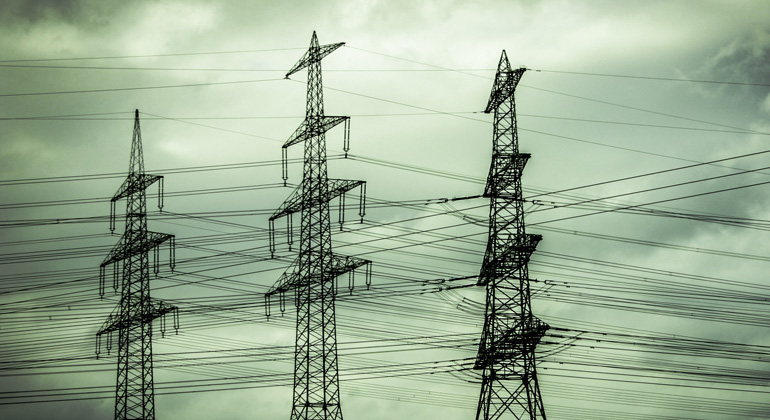Electricity consumption in Europe will shift under climate change
Rising temperatures due to greenhouse gas emissions will fundamentally change electricity consumption patterns in Europe.
A team of scientists from Germany and the United States now analyzed what unchecked future warming means for Europe’s electricity demand: daily peak loads in Southern Europe will likely increase and overall consumption will shift from Northern Europe to the South. Further, the majority of countries will see a shift of temperature-driven annual peak demand from winter to summer by the end of this century. This would put additional strain on European power grids, the study now published in the renowned US journal Proceedings of the National Academy of Sciences suggests.
“It is fascinating to see how the response of electricity consumption to temperature changes is similar across European countries –peak and total electricity use seem to be smallest on days with a maximum temperature of about 22°C (72°F), and increases when this daily maximum temperature either rises or falls,” lead author Leonie Wenz from the Potsdam Institute for Climate Impact Research (PIK) explains. “We use this common characteristic as a basis for estimating future electricity consumption under climate change – that is beyond the current temperature range. That way, those European countries that are already experiencing very hot temperatures today serve as examples for the future of cooler countries. It turns out that electricity demand in Europe will shift from countries like Sweden or Norway to countries like Portugal or Spain. Concurrently, the annual peak load will shift from winter to summer in most countries.”
+++Using hourly electricity data across 35 countries+++
“Quantifying the connection between heat and human behavior is at the frontier of climate change research. There now is ample evidence that when it’s hot outside, air quality suffers, people are more stressed, aggressive, violent and less productive, mortality and crime rates rise. All sectors of the economy are affected by thermal stress, from the residential to the commercial, agricultural to the industrial sector. The main adaptation mechanism available to humans to combat high outdoor temperatures is a cooled indoor built environment, which in most settings requires the consumption of significant amounts of electricity. This increased demand for air conditioning will put pressure on electricity grids when it is hot outside and generation and transmission infrastructure are already strained,” co-author Max Auffhammer from the University of California, Berkeley, adds.
The study is the first to use observed hourly electricity data across 35 European countries – which are connected by the world’s largest synchronous electrical grid – to estimate how climate change impacts the intensity of peak-load events and overall electricity consumption. While previous work on the relationship between temperature and electricity consumption primarily focused on the US or single European countries and the overall consumption impacts, recent research suggests that the effects of changes in peak load may be much larger and costlier, putting the focus on times when the power grid is already stressed.
+++A fundamental challenge for transmission infrastructure and peak-generating capacity+++
“A few decades ago, no ordinary car in Europe had air conditioning, today almost every automobile has it – the same development will probably happen with buildings in Europe, yet not for reasons of comfort but due to necessity. People will need to cool down their environments to keep up their life and economic productivity,” co-author Anders Levermann from PIK and Columbia University in New York concludes.
While the study indicates that the projected effect of climate change on European electricity consumption as a whole is nearly zero, the shift in spatial as well as seasonal electricity consumption will be a fundamental challenge for Europe, he argues: “This will have important ramifications for the transmission infrastructure, peak-generating capacity and storage requirements – to adapt to the warming that is already unavoidable due to past greenhouse gas emissions. The easiest way to limit the impacts of climate change remains to keep the Paris climate guardrail, that is to limit the temperature increase to well below 2 degrees Celsius.”








